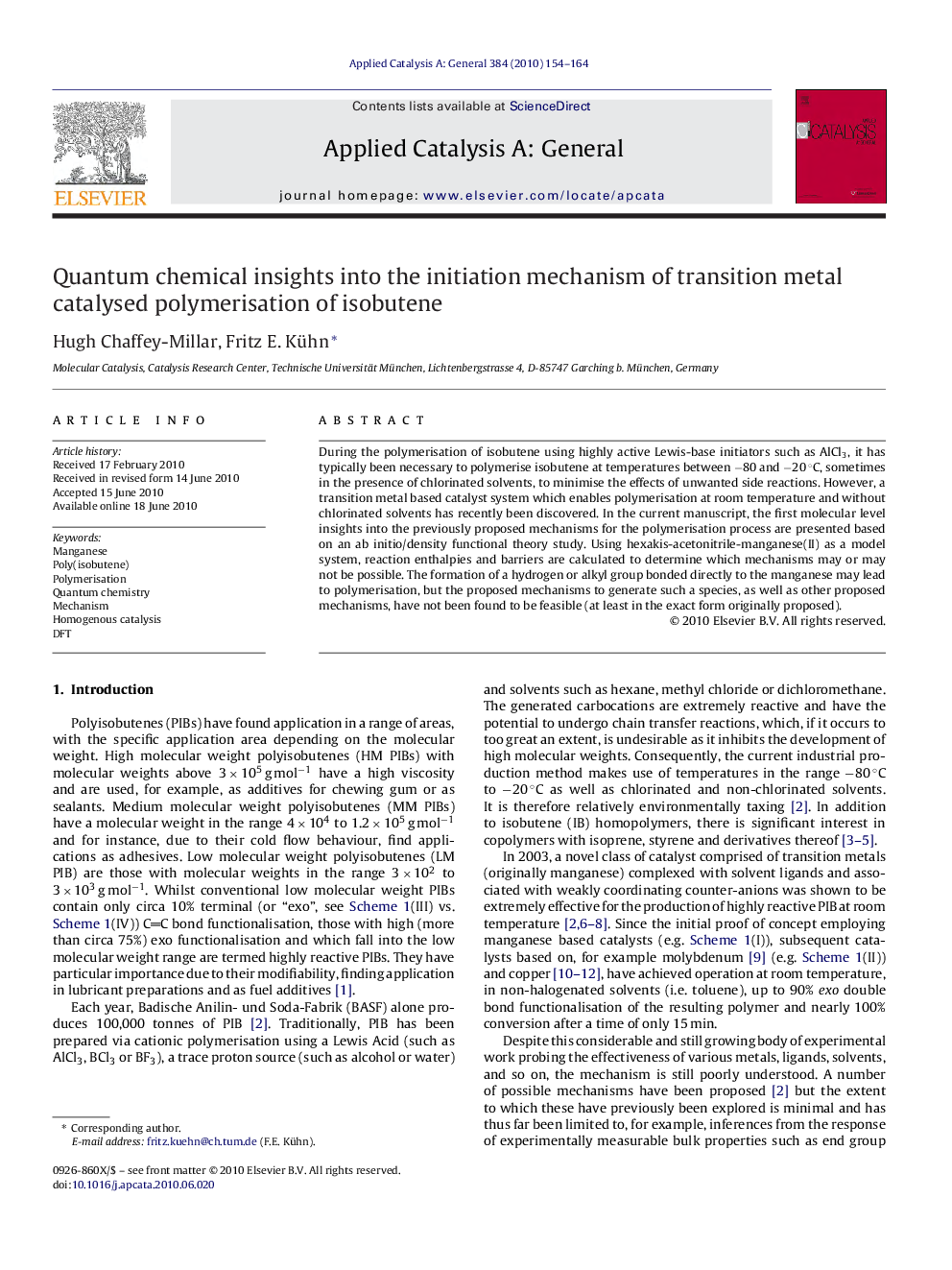| Article ID | Journal | Published Year | Pages | File Type |
|---|---|---|---|---|
| 41948 | Applied Catalysis A: General | 2010 | 11 Pages |
During the polymerisation of isobutene using highly active Lewis-base initiators such as AlCl3, it has typically been necessary to polymerise isobutene at temperatures between −80 and −20 °C, sometimes in the presence of chlorinated solvents, to minimise the effects of unwanted side reactions. However, a transition metal based catalyst system which enables polymerisation at room temperature and without chlorinated solvents has recently been discovered. In the current manuscript, the first molecular level insights into the previously proposed mechanisms for the polymerisation process are presented based on an ab initio/density functional theory study. Using hexakis-acetonitrile-manganese(II) as a model system, reaction enthalpies and barriers are calculated to determine which mechanisms may or may not be possible. The formation of a hydrogen or alkyl group bonded directly to the manganese may lead to polymerisation, but the proposed mechanisms to generate such a species, as well as other proposed mechanisms, have not been found to be feasible (at least in the exact form originally proposed).
Graphical abstractFigure optionsDownload full-size imageDownload high-quality image (45 K)Download as PowerPoint slideResearch highlights• First quantum chemical study into the room temperature, transition metal catalysed polymerisation of isobutene. • None of the previously proposed mechanisms are viable exactly as originally given. • Mechanisms involving Ziegler–Natta style monomer insertion reactions at the complex core may be possible. • The role of the counter-ion in facilitating some mechanisms has not been ruled out.
